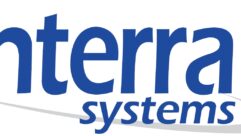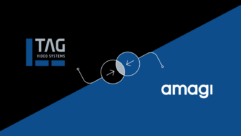
Technology Showcase:
Noise-masking Systems
Oct 1, 2005 12:00 PM,
By Tim O’Leary
Protecting privacy
Web-Expanded Sidebar
What is Psychoacoustics?
Atlas Sound MG3001
Aristotle once said, “Why is it the buzzing in the ears ceases if one makes a sound? Is it because a greater sound drives out the less?” This statement basically describes the principle behind noise-masking systems. Noise masking, also referred to as sound masking, is the practice of concealing conversations and vocalizations shared in a specific location so that only the intended listeners hear the communication. Sound masking has found an increasing number of applications in society — initially in defense applications and more recently in applications that protect our privacy.
GUARDING PRIVACY
The goal in noise masking is to establish oral privacy and safeguard against eavesdropping. Electronic sound machines are designed to emit white noise, or what the industry calls pink noise, at the same or greater volume than standard vocal volumes to drown out voices that otherwise may carry in open floor plans.
The business of protecting private conversations has been around as long as snooping. Governments in every age, all over the world, have developed and implemented techniques, strategies, and machines to guard top-secret information. The government, and businesses contracted to perform government work, use noise-masking products in defending national security. The government has also instituted regulations pertaining to the protection of health (HIPAA) and financial (GLBA) privacy, requiring health-care providers and financial institutions to guard consumers’ information.

Rane RA 30
Aside from these mandated uses, noise masking is also instrumental in providing harmonious working conditions in large, open-cubicle working environments and in protecting against identity theft. Government and financial buildings, hospitals, doctors’ and counseling offices, churches, schools, and businesses accessing and sharing personal consumer data are all potential candidates for noise-masking systems.
For more information on HIPAA and GLBA, visit the U.S. Department of Health and Human Services, Office for Civil Rights, at www.hhs.gov/ocr/hipaa or the Federal Trade Commission at www.ftc.gov/privacy/glbact. Information on open-cubicle work environments can be found in the ASTM Standard Guide for Open Office Acoustics (www.astm.org).
BASIC COMPONENTS OF NOISE-MASKING SYSTEMS
Generally, a noise-masking system includes loudspeakers, a sound generator, and an amplifier. Products on the market today come in all derivations of those three components, often combining elements into one or two pieces of hardware. Loudspeakers are installed in ceilings/attics and aimed up or down or angled sideways, depending on the size of the space, amount of insulation, placement of vents, etc. The sound generators and amplifiers are often located on the floor level so they can be easily modified to suit the area.
Considering that normal speech volumes fall between 125Hz and 8kHz, the system should output in the same levels. It is vital that the noise masking invade the entire perimeter of the space equally, not so low in volume as to avoid masking conversations, but not so loud as to draw attention to the system itself and cause distraction. A properly designed masking system must address these issues, but flawless installation of the system is the most crucial element.
THE NOISE-MASKING MARKET
Valcom offers the V-9422 spot sound-masking speaker for easy and inexpensive sound masking. The speaker is recommended for use by clergy, human resources, counselors, financial offices, attorneys, and medical facilities interested in adhering to HIPAA regulations. The self-contained system requires only a 25mA at 24V DC power supply. It is housed in a 2’×2′ ceiling tile with a random noise generator source and a built-in amplifier. The random noise generator has an output frequency range of 80Hz to 10kHz. The speakers are designed for easy volume control, from 55dB to 70dB at 3ft. via the front panels.
Lencore’s Spectra Sound Masking LM6 and LM4 sound-masking products can be installed in a ceiling plenum or hang directly into an office space. Its Spectra Sound Masking LECPM6 and LECPM4 models are installed flush with the ceiling.
Both series of products have self-contained CMOS/MSI digital random sequence noise generators. They contain electronic audio amplifiers with filters for spectrum shape adjustment ranging from 1dB at 125Hz to 20dB at 8kHz. The loudspeakers have 10-step volume control at a range of 56dBA to 86dBA. The products require 16/18V AC, 60Hz at 50mA, and can support additional models. Lencore offers a number of additional features to accommodate large projects and multifaceted applications. Recommended applications include open-floor plan offices, health-care facilities, pharmacies, financial institutions, medical offices, call centers, government facilities, legal institutions/offices, military bases, and customer service centers.
Rane offers the RA 30 realtime analyzer with a built-in pink noise generator. It can monitor the pink noise signal received by a measurement microphone and use an external 1/3-octave equalizer to adjust the sound system based on the readings presented by the LED display.
LogiSon offers the LogiSon Network end-to-end sound-masking package. The system includes a centralized network control panel that can implement different attributes of masking to separate zones of the system, control volume for each of the primary hubs at 0.5dBA increments over a range of 36dBA to 85dBA, and interface with computer programming. The system’s primary hub is attached to the loudspeakers and generates the random masking sound. It also contains the 1/3-octave equalizer, a 1/1-octave paging equalizer, and the amplifier.
Secondary hubs attach to one primary hub, and a loudspeaker attaches to them. The loudspeaker from the secondary hub articulates the assignment given to the primary hub through the control panel. One or two secondary hubs can be used with each primary hub for masking control. Additional components include a primary power hub for larger projects, loudspeaker assembly, a ceiling-mount adapter, network cabling, an audio input module, and an acoustic network manager.
The housing enables the system to be installed either in the ceiling plenum or hanging into an open-style environment. Its sophistication of network control, down to each loudspeaker, allows this system to micromanage sound masking while providing optimal noise control.
Quam offers three product assemblies: the MA, the MA/E6, and the UL10. The MA units are made up of several components: the volume enclosure (two choices), loudspeaker (six choices), transformer (five choices), and an optional five-position rotary tap selector switch.
The MA/E6 universal masking speaker is designed to offer high performance economically. There are no options available for the assembly of this unit, which is designed to accommodate simple installation, satisfy local codes, and provide equalized masking. The unit produces 101dB at 1W, 3ft.
The UL10 universal masking speaker 5346E is designed for plenum ceilings. In particular, this model has been approved by the city of Chicago and passes its strict local building codes. The speaker is responsive from 60Hz to 12kHz and generates 95dB. Power handling is 15W.
LynTec offers two generators: the PAC+ programmable audio controller and the RCMS1. The PAC+ can be programmed to control masking noise, music, or paging at different levels depending on the day, time, and office traffic. Transitions between programmed levels are made slowly, over time, and are undetectable (programmable from 0dB to 24dB in 1.5dB steps). The RCMS1 remote-controllable masking source can be installed in any AC wall outlet. Making and breaking the contact connection controls the noise masking at 50dB.
Atlas Sound, whose products are also distributed by J.W. Davis & Company, offers both self-contained noise-masking systems and component parts. The 117VAC 60Hz Masker AM1100 (with line cord and 4ft. chain) comes with a built-in power supply; with the 16VAC 60Hz Masker with chain, a power supply is not included. Other system components include a digital pink noise generator, a 2W amplifier, and a 4in. loudspeaker. Frequency response is 200Hz to 4kHz.
The M1000 masking speaker assembly features an 8in. loudspeaker, a 70V internal transformer, an enclosure, a baffle, and mounting hardware. Four generators are offered: the GPN-1200A, GPN-1200B, the MG2500, and the MG3001.
The GPN-1200A digital pink and white noise generator outputs .3V into 600Ω and offers -8dBm with low-pass filter to shape frequencies from 16kHz to 250Hz at 12dB per octave. The GPN-1200B is a digital design recommended for large projects that also features frequencies from 16kHz to 250Hz at 12dB per octave. The unit includes a power supply.
The computer-programmable MG2500 renders pink noise, pink noise purity (-3dB per octave), spectral purity (0.1dB at 0Hz to 20kHz), and audio input for extended applications. It offers a frequency response of 20Hz to 20kHz at +4dBu (+0/-0.5dB).
The MG3001 is a digital generator/equalizer with two built-in noise generators for two independent noise sources, 80dBu and 0dBu, and each can be adjusted separately. The system is computer-programmable and provides a built-in power supply, 94VAC to 260VAC at either 50Hz or 60Hz. The frequency response is 20Hz to 20kHz at +4dBu (+0/-0.5dB).
Gold Line offers a variety of sound-masking generators. The PN2 pink noise generator provides an output level of -23dBu, 55mv, and a range of 20Hz to 20kHz. The PN2W generates pink/white noise, outputting continuously at 83dB to 85dB ref, 98dB SPL, 62mV, at a range of 20Hz to 20kHz.
The PN3A generates pink noise either continuously at 95dB to 97dB ref, 110dB SPL, 245mV, or burst format at 11s, with a frequency range of 20Hz to 20kHz. The PN3B provides pink noise at 25mV to 250mV, -30dBu to -10dBu, or a 1kHz tone at 52mV to 520mV, -35dBu to -3.5dBu, and a range of 20Hz-20kHz.
The PWN1 personal white-noise generator is designed to aid tinnitus victims and outputs -36dBu to 13dBu. The speaker outputs 30dBa SPL to 72dBa SPL at 3ft., with a frequency range of 25Hz to 20kHz.
Elkay Industries offers three sound-masking speaker assemblies: MA1, MA2, and MA3. Each series comes pre-assembled with a speaker grille, an enclosure, and options for speaker/transformers. The speaker assemblies are designed for ceiling plenum installation and can be oriented in up, down, or horizontal positions. The MA1 has an enclosure volume of 264in3, the MA2 has a volume of 448in3, and the MA3 has a volume of 747in3.
Dynasound offers commercial and design-build sound-masking systems. The latter involve a representative designing a system for individual projects.
Dynasound’s commercial product offerings include the DS101 series of analog sound-masking systems, which includes the Generator Equalizer Module (analog pink, white, or super white at -22 active 1/3-octave band filters from 80Hz to 10kHz). Also included is the Mixer Equalizer Module, which offers four inputs for the integration of music, paging, etc. (at six active 1-octave filters, 125Hz to 4kHz). Finally, the Amplifier Module provides 60Wrms output to a 70V line, controlled in 1.5dB increments.
The DS3000 DSP sound-masking processor produces pink noise; has an audio input with two channels; and combines a generator (spectral purity of 0.1dB at 0Hz to 20kHz), a mixer (filtering at -3dB per octave low-pass), and an equalizer (combined 1/3 octave and parametric per channel). The unit is computer-programmable and adjustable to accommodate variable conditions and provides remote control capability via RS-232.
The DS1402 automatic level controls are designed to control two channels of input — masking, music, or paging — by programming level changes. Requiring 120VAC, 14W, fused, the unit has a spectrum of 20Hz to 20kHz, and each of the two inputs of 50KΩ is adjusted independently to output less than 600Ω.
DS160 series zoned power amplifiers are used with sound-masking/music/paging systems with more than 60W of output and are available with two- or four-channel modes. DS1625 250W power amplifiers are for sound-masking/music/paging systems with more than 120W of output. The amplifiers provide 250W of continuous power and deliver 8Ω, 4Ω, 70V, or 25V distribution. The level control, input sensitivity selector, and high-pass filter selector are located on the rear panel.
Dynasound’s DS1327 speakers are designed for ceiling plenums (1/8W, 1/4W, 1/2W, 1W, 2W, and 4W and a 70.7V internal transformer), and its DS1337 speakers are designed for open-structure architecture and provide 1/8W, 1/4W, 1/2W, 1W, 2W, or 4W and a 70.7V internal transformer.
The DS1042 sound-masking system features a conditioner, tone control through a low-pass filter that allows tuning of the sound-masking spectrum, and a 25W amplifier that provides an internal digital white noise sound-masking signal (70V output) for a 6,000-square-foot zone. The system can accommodate up to 25 sound-masking speakers.
The DS1092 sound-masking system features a generator, a mixer, and an amplifier that produces an internal, analog, gaussian-random sound-masking signal, switchable between pink and white noise. The mixer allows layering of sound masking with music and paging at various line- and mic-level inputs. Output levels are 70V or 8Ω through a 40W amplifier.
The DS108 portable/personal sound-masking system, called the Privacy Provider, can be used on a desktop, a wall, or a window. The system uses analog, gaussian-random, non-deterministic sound piped through a 3in. loudspeaker. It has an active volume control for output adjustment, active tone control for low-pass filter (6dB/octave rolloff) with 12V input and an external step-down transformer (primary: 110V; secondary: 12V).
The DS1082 is a pre-assembled masking system for areas smaller than 5,000 square feet. The loudspeaker has 8Ω impedance and 12V input with 90dB at 3ft. and 1W of pink noise. The system uses custom WhisperWave technology, offering low-frequency response while providing high-frequency adjustment. The power rating is 18Wrms (EIA 426 standard).
For More Information
Atlas Sound
www.atlassound.com
Dynasound
www.soundmasking.com
Elkay Industries
www.elkayindustries.com
Gold Line
www.gold-line.com
J.W. Davis & Company
www.jwd.com
Lencore
www.lencore.com
LogiSon
www.logison.com
LynTec
www.lyntec.com
Rane
www.rane.com
Valcom
www.valcom.com
Tim O’Learyis a security consultant and technical editor for two security industry magazines.
What is Psychoacoustics?
A familiarity with the science behind sound masking will hopefully make you more effective as an audio consultant and salesman.
Psychoacoustics is the branch of science that serves the sound industry, and it is especially interesting because it involves the physics of electronically manipulating audio, the physiology of the human ear in hearing the sound, and the function of the human brain in interpreting the sounds once perceived. It can be defined simply as the psychological study of hearing. Some might imagine that this would be a concern of neurophysiology, and indeed it is.
Determining the abilities and limitations of human hearing is invaluable in helping us to use sounds in our environment. Any device that produces sound for the purpose of human listening should take account of what the listener’s ears are going to do with that sound.
Psychoacoustics is regarded as a branch of psychology essentially because its primary activity is to measure the behavioral responses of human listeners. Until recently, psychoacoustics has devoted more attention to the behavior of the peripheral auditory system than to the details of cognitive processing. Psychoacoustics is not concerned with how sounds produce a particular emotional or cognitive response. These aspects are left to the cognitive psychologists. Nevertheless psychoacoustics is a very broad area, and while there is a large overlap with physiology at one end, at the other end we sometimes appeal to mainstream psychology in order to account for our more complex experimental results.
Some other areas of psychoacoustics research whose fruits are being manifested in high-tech audio processing systems include how we separate sounds occurring simultaneously (e.g. two speakers speaking at once), how we localize sounds in space, how we determine pitch, and how the cochlea separates a complex sound into its different frequency components.










